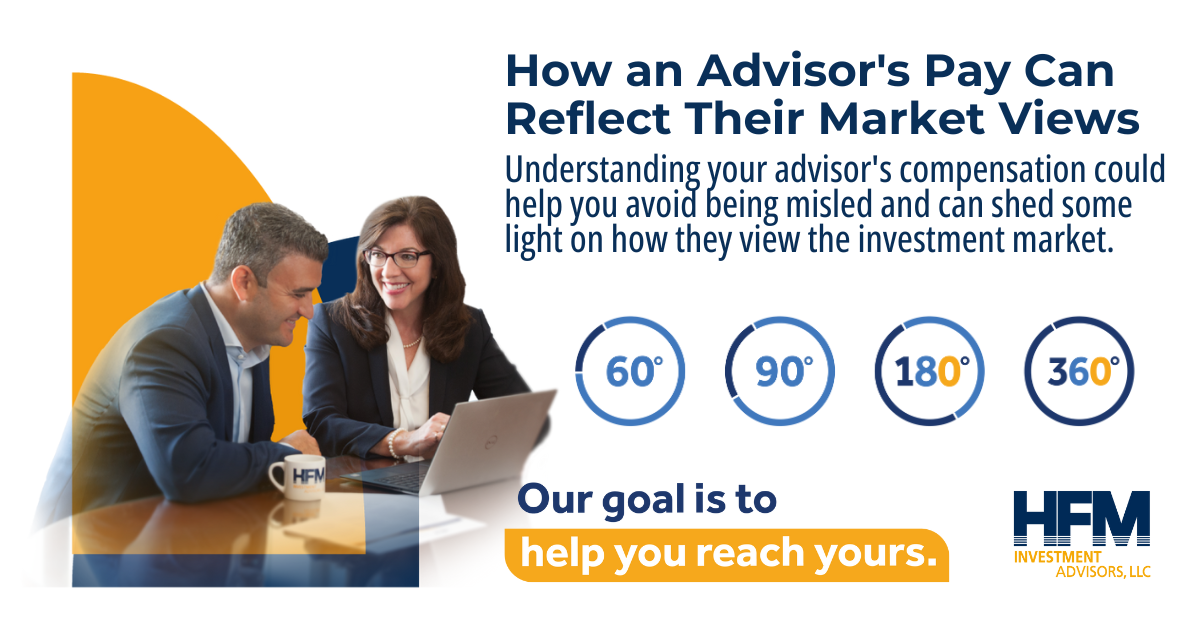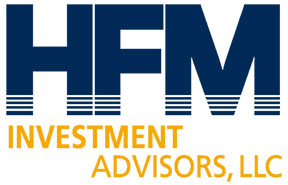
How an Advisor’s Pay Can Reflect Their Market Views
We often like to quip that, in life, “you get what you pay for.” Generally, when someone says this, they are referring to some el cheap-o hotel they got because they were looking to save a few bucks on a trip back in college. Sure, the bed was uncomfortable, and the hot water only lasted for a few minutes, but you couldn’t beat the price. The same sentiment is true in many other facets of life, including the input of financial advice. You can get input from your news-obsessed uncle for free, but that is likely about how much his advice is worth. You can study it for yourself, which is also free, but you may not have the time or the interest to do that. Finally, you can outsource that work to someone else.
One problem is that not everyone in the financial advice/financial planning/wealth management industry gets paid the same way. Some are paid based on the amount of assets they manage for you, some on their time spent with you, and some on the products they sell you. If you are paying an advisor, you need to understand how your advisor gets paid. Understanding your advisor’s compensation could help you avoid being misled and can shed some light on how they view the investment market.
Before continuing, we need to mention some compliance disclaimers. Just because an advisor uses a particular fee structure does NOT (in and of itself) mean that they are good or bad. Also, investing involves risk, and there is no magic fee structure that keeps you safe from losing invested money.
With that out of the way, we can consider several financial advisor compensation models. No doubt, some models that will be missed, and many advisors engage in some combination of these models, but we will treat them separately for simplicity’s sake.
Assets Under Management (AUM) –The idea of charging based on AUM simply means that the advisor charges the client a percentage fee based on the total assets that the client allows the firm to manage. In theory, this reduces the potential conflicts of interest between the advisors and their clients; if the portfolio improves, the advisor is rewarded, if the portfolio does not improve, the advisor loses revenue.
As far as how the AUM model affects the market outlook for advisors, AUM advisors tend to be optimists, plain and simple, and set clear expectations for your portfolio—both on the upside and the downside. If an advisor was confident that the economy would be in shambles next month and would not recover, he or she would charge you up front, not in the long-term like with the AUM model.
An advisor paid under the AUM tends to prepare your portfolio for bear markets, economic slow-downs, and recessions. With HFM’s 180° & 360° services, we align your portfolio with your personal situation, your goals, and your risk tolerance. We plan for potholes and traffic jams on the road to financial freedom because we know that historically investing in the market is still a great tool to get there in the long run. The AUM model allows both the client and the advisor to benefit from the long-term growth of the markets.
Commissions (Investments) – The commission model is what everyone loves to hate. In the old days, it meant brokers on the phone all day long, promoting some stock as the next big thing. Their training usually consisted of sales techniques, not investment management and financial planning. Thus, they wouldn’t be super confident in the total economy, but boy, they were extremely confident in the prospects of a few companies.
.These brokers generally view the stock market as a wasteland of poor-performing stocks, pocketed with oases of amazing returns that only they know about. This model has morphed slightly and dwindled significantly over the last 20 or 30 years. It still exists in different forms than the intense traders-yelling-in-their-corded-phones scenes from yesteryear movies. Some advisors still recommend mutual funds to clients that offer some form of commission, either when the client buys the security or when they sell it. And it is not wrong for an advisor to recommend securities for a commission. Be mindful when someone focuses on the tremendous upside of any investment product or stock while downplaying any risks or downsides.
Commissions (Insurance) – Commissions are not only made when selling stocks and securities, they are also often made on the sale of insurance products (like life insurance and annuities). Yet, despite the two products sharing a compensation model, they are pitched very differently. While a stockbroker pitches massive returns in select sectors, an insurance salesman often emphasizes the sobering risks in the economy. The agent may discuss the extreme volatility of the markets and then discuss their annuity that can provide consistent and reliable returns every year. They may even say that their product offers income that is guaranteed, which may be true. But benefits like the one mentioned come at a cost, such as high annual fees, restrictions on how and when you can use any cash value if applicable to your policy, and even an expiration on benefits.
Now, we are in no way, shape, or form saying that you should not carry insurance. That would be almost as ill-advised as…well…not having insurance. We are also not saying that certain insurance products are universally bad or good. We are saying that when it comes to insurance, the commission model sometimes incentivizes salespeople to focus on the potential dangers and tail-end risks in investing while ignoring or downplaying the financial markets over the last 90+ years.
Retainer – A retainer means clients pay their advisor for their time and the advice they receive, usually in the form of an hourly or flat rate for a certain number of hours or project. Similar to how you would pay other professionals, like your attorney or accountant. HFM60° is a collaborative coaching session with a CERTIFIED FINANCIAL PROFESSIONAL. For a small fee, you can choose your topic, gather your documents, bring your questions, and develop a strategy alongside a trusted, certified expert.
The retainer model breeds a market outlook similar to the AUM model, with advisors focusing on the long-term, historical growth. The advisor is paid regardless of whether the market goes up or down. Unlike the AUM advisor, the advisor on retainer gets paid the same regardless of market performance. If a client sticks with a retainer advisor, Mr. and Mrs. Client will pay the same amount regardless of where the market is at any particular moment.
Conclusion – How advisors are paid has changed drastically over the years. Fading away are the days of the high-intensity stock pickers, and emerging are models where advisor comp has nothing to do with market performance. We are not wise (or maybe stupid) enough to speculate as to what the payment landscape will look like 10 or 20 years from now.
Choosing an advisor is very personal, and how they are paid is not the only factor you should consider. But you must understand how they get paid and how that might influence their outlook and your portfolio. When hiring an advisor, you get what you pay for in more ways than one.

102 WEST HIGH STREET, SUITE 200
GLASSBORO, NJ 08028
WARRANTIES & DISCLAIMERS
HFM Investment Advisors, LLC (HFM) is a registered investment adviser located in Glassboro, NJ. HFM’s website is limited to the dissemination of general information pertaining to its advisory services, together with access to additional investment-related information, publications, and links. Accordingly, the publication of HFM’s website on the Internet should not be construed by any consumer and/or prospective client as HFM’s solicitation to effect, or attempt to effect transactions in securities, or the rendering of personalized investment advice, over the Internet. A copy of HFM’s current written disclosure statement discussing HFM’s business operations, services, and fees is available at the SEC’s investment adviser public disclosure website – www.adviserinfo.sec.gov or from HFM upon written request. HFM does not make any express or implied representations or warranties as to the accuracy, timeliness, suitability, completeness, or relevance of any information prepared by HFM or any unaffiliated third party, whether linked to HFM’s website or incorporated herein, and takes no responsibility therefor. All such information is provided solely for convenience purposes only and all users thereof should be guided accordingly.
This website and information are provided for educational and information purposes only. All investments involve risk and are not guaranteed. Be sure to first consult with a qualified financial advisor and/or tax professional before implementing any strategy. This website and information are not intended to provide investment, tax, legal, or other professional advice.
